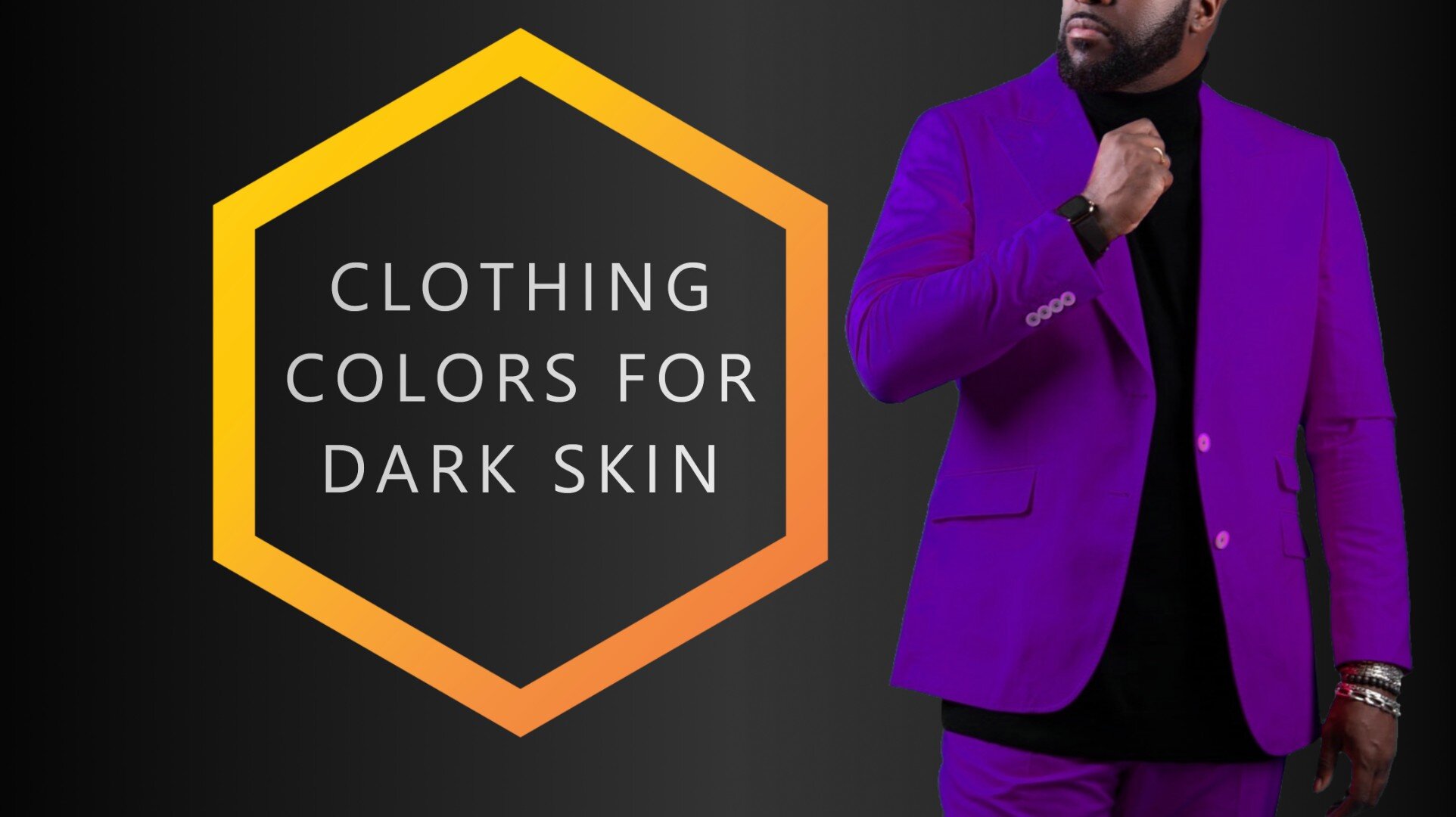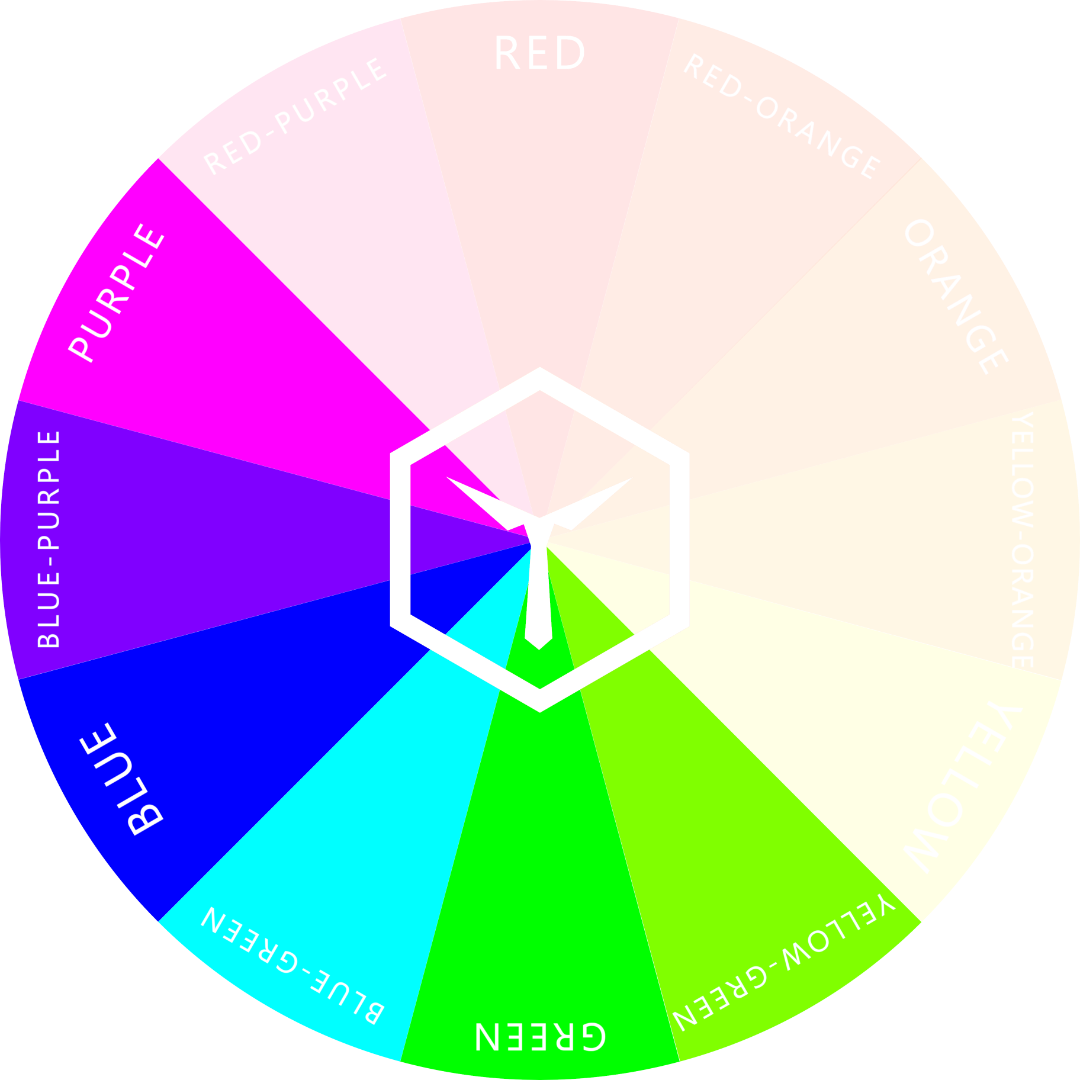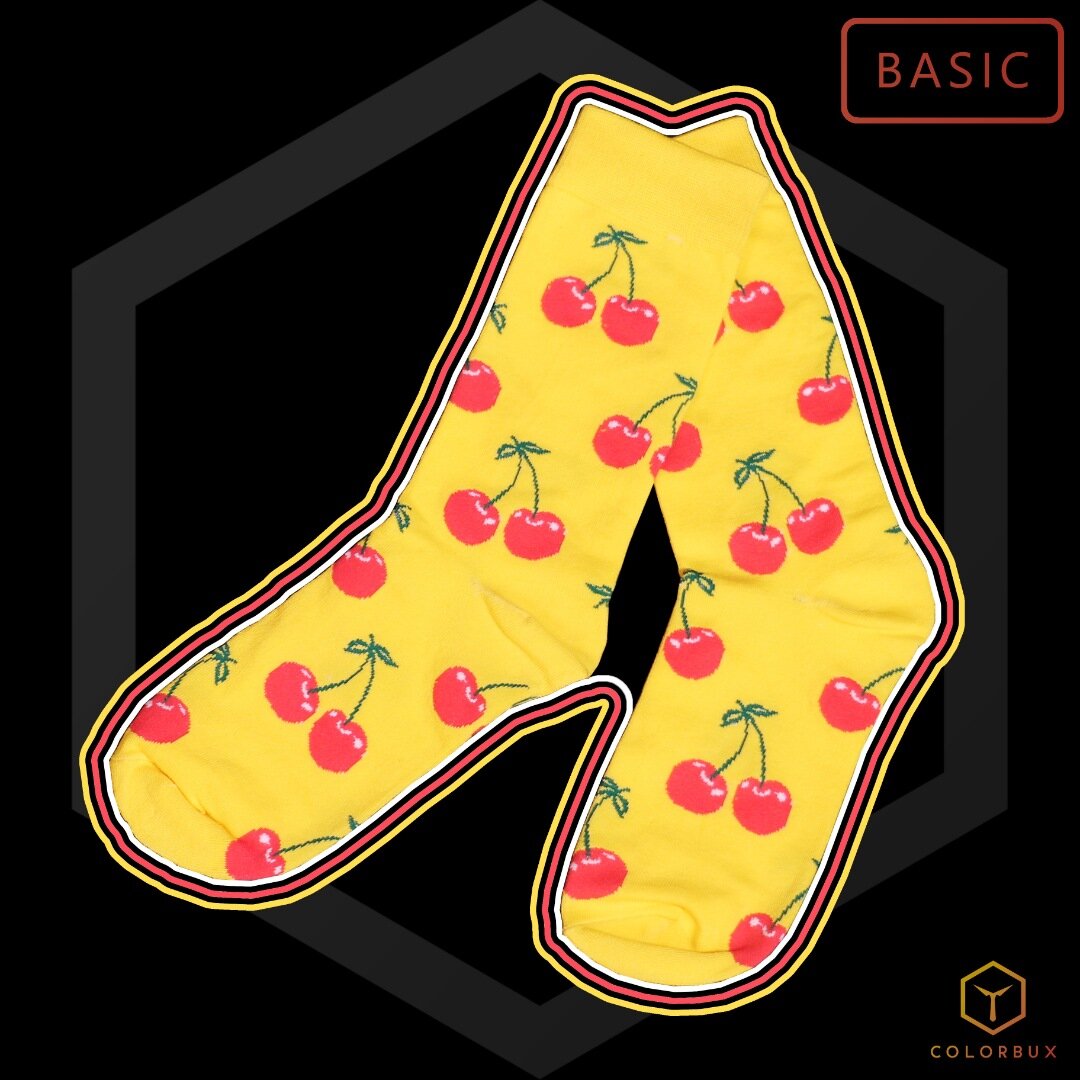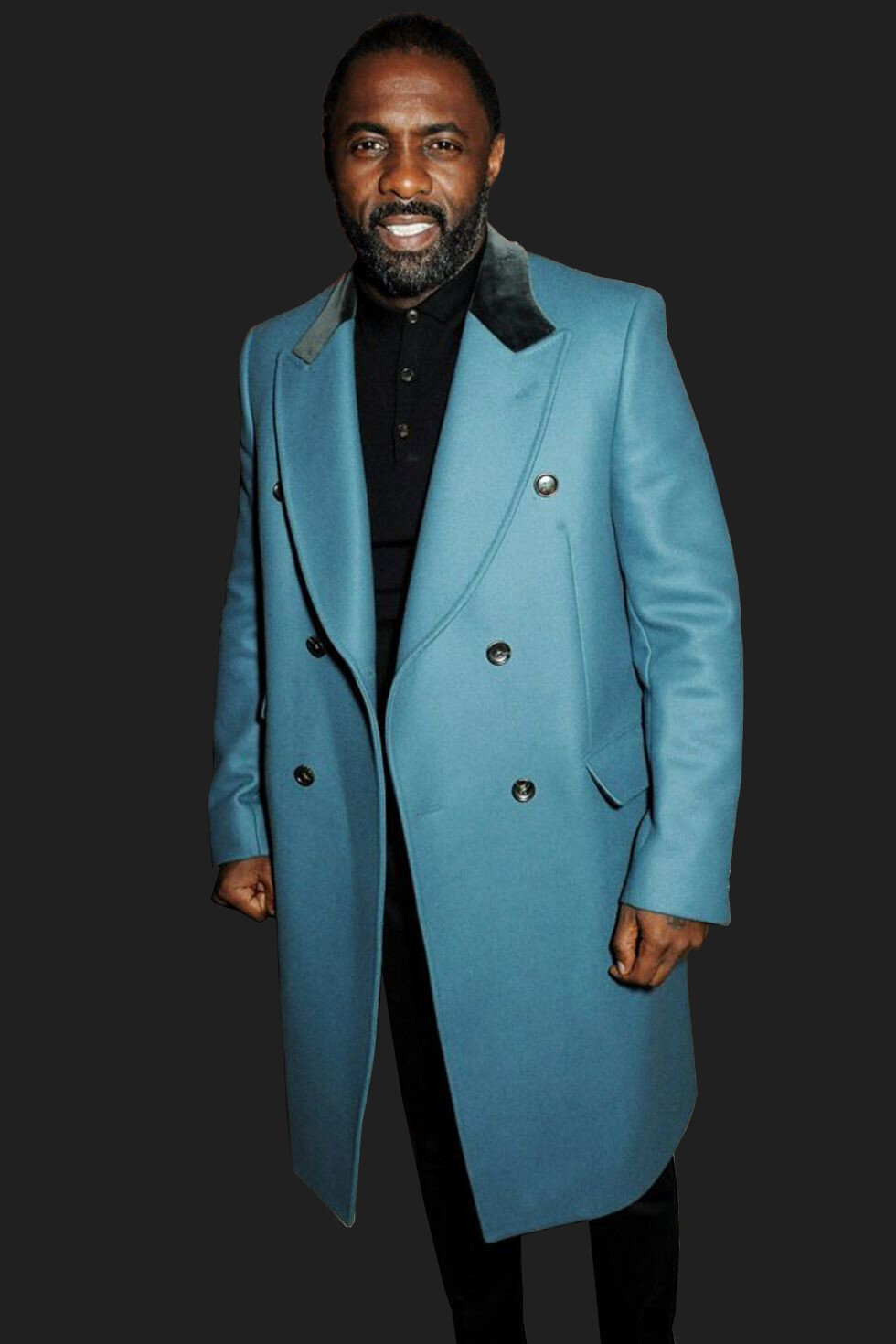Clothing Colors For Dark Skin [Full Guide]
Getting good quality clothing is one thing, but getting the right styles and colors that perfectly accentuate your skin tone - dark or light skin - is quite another.
But here’s the catch; choosing the best clothing colors for your skin tone isn't an exact science. Though this can be a good thing, it can also become confusing if you aren’t quite fashion-aware. However, as with most things, it gets better with practice.
You don't need to become a fashionista, but it's crucial to get used to what sits perfectly with your skin tone and come to terms with what doesn't. Beyond feeling good, you also want to look good, right?
Seeing as one article may not substantially cover all skin tones (in addition to the fact that some skin tones have already been treated on this blog), this post will deal with the best clothing colors for dark skin. Of course, we'll also touch on the colors that don't cut it.
Which Colors Look Best on Dark Skin?
In general, bright and light colors suit dark skin the best. Opting for colors on the warm side of the color wheel is also recommended. Pink and rose are always great on dark skin. But, stay away from dark yellows and other dark olive shades and tones. Also, when mixing and matching colors, make sure your outfit has a decent amount of overall contrast.
The following image illustrates the colors that look best on dark skin.
Stick to colors over 25 luminance that are not of olive color. These colors tend to look great on dark skin.
You have probably heard otherwise, but trust me when I tell you that picking out your clothing color with your dark skin tone in mind will go a long way to making your outfit turn out better.
Guidelines for picking clothing colors as a dark skin person
Before we delve right into it, it's essential to get some things straight first.
While 'dark skin tone' is an umbrella word, it comprises different complexions ranging from Africans, people of the Mediterranean to Indians and some from far east Asia.
Side Note: To know for sure your dark skin tone's complexion, you may need to take a look at the Fitzpatrick scale.
You should also note that many dark skin toned people also have dark eyes and hair color, which is otherwise known as "low contrast complexion". You should note this because eye and hair color complement your clothing and contribute to the general outcome of how you look.
People with dark skin tones can also have eye and hair color that is not dark. Whatever the case, what's most important is to consider this when picking out clothing colors. We write more about contrast in our article about dark versus light clothing colors.
Lastly, the tips in this post are not unbreakable laws set in stone. They are suggestions and should be treated as such. In the end, it's entirely up to you what you choose to wear.
PEOPLE ALSO READ:
Contrast
The first thing (probably the most important thing) to note here in terms of color contrast is that various colors appear different when placed against others.
When it comes to fashion and picking out clothes, this makes all the difference. For instance, the color blue will appear differently against a green background compared to how it will look against a white or a black one, for example.
There are two types of contrast: contrast of luminance (lightness) and color contrast. Both are relevant in fashion and for the topic of the best colors for dark skin.
In short: The two hues blue and yellow have high contrast of luminance and high color contrast – even though both are fully saturated. Blue has a low lightness, whereas yellow is quite luminant, which makes for high contrast in luminance. Also, the two colors are rather far apart on the color wheel, which makes them have high color contrast.
All hues and colors fall into one of the two following categories: warm colors and cold/cool colors.
These are all the warm hues of the color wheel.
These are the cold hues of the color wheel.
When two colors that fall in the same category are put against each other, they will often drown each other out slightly, sometimes making for a less exciting combination. But, they also tend to harmonize better.
On the other hand, if the colors are from the two different categories, they complement each other earnestly. This makes both colors “pop”. Strongly contrasting colors are harder to pull off, though.
The former is low contrast, while the latter is high contrast.
More contrast = more “pop”.
Try contrasting your dark skin tone when putting on clothes. Seriously. Black, dark grays, and other dark colors – especially dark brown and olive – are usually not the best choice if you’re looking for contrast. To put this plainly: Wear clothes that have very different colors than your skin.
Quite a dark and somber look for Idris Elba. We reckon a white shirt would have suited his complexity better with the black suit and tie. Original image: Esquire.com
Such a dark outfit like the one Idris Elba is wearing in the image above looks rather somber and overly serious. This is because he’s a rather low contrast person (his hair, skin, and eyes are all dark), and wearing all black highlights nothing really – except the shining contours of his face, which makes him look much too serious.
Swapping out the black shirt for a plain white one would have worked wonders and changed his whole look from somber to spot-on. So, what do we learn? Contrast is necessary for a balanced look. If your personal features make you “low contrast” like Idris, wear more contrasting color combinations.
THESE GO WELL WITH DARK SKIN:
Warm Colors and Dark Skin
For people with dark skin tones, clothes in warm colors (e.g., orange, pink, yellow, red, etc.) are the surest way to go.
Dark-skinned people are usually better off than people of lighter complexion when rocking warm or bright clothing colors.
Warm hues properly accentuate their usually warm or olive skin undertone and bring out the shine in a way that isn’t possible for pale-skinned individuals (that usually have cold undertones).
Bright, bold, and warm is by far the easiest way for people with dark skin to stand out. Check out Idris Elba:
Nevertheless, be careful not to overstretch this advantage. For instance, don't wear many warm-colored clothing pieces that are too light (for example pale yellow) or overly shiny (like gold). This is because the contrast might become excessive, so much so that your clothes become too showy, consequently looking way too overbearing.
Contrast is good – but don’t overdo it (unless you want to).
An absolute classic that always looks great on dark skin: a light pink (or rose) shirt, some khakis, and a pair of white sneakers. Now that’s serious style.
WARM AND CUDDLY (COLORS):
Cold Colors and Dark Skin
If you are a dark-skinned person, then wearing cool colors like dark blues can look somewhat off. They tend to tone your complexion down and make you appear duller. Cold colors usually go better with paler skin tones.
As a dark skin person, you can, however, work your way around pulling off cold colors, but you have to be careful. One way to go about this is to wear cold colors in mostly lighter tints or tones. Or better, you can combine them with warm (and bright) colors to balance out the temperature a bit.
For individuals with darker skin, cold colors make awesome accents. Accessories like sunglasses, ties, or socks look great when they have a bright (and cold) color. For example, grab a pair of Tic Tac Toes from our shop, pair them with a nice light blue pocket square and a nice gray jacket over a plain white shirt. Now, wouldn’t that be fetching?
RATHER COLD COLORS:
Neutrals
As it often goes with anything that has to do with color in fashion, it’s mostly about wearing unoffensive canvas colors and accenting with bolder colors. “Unoffensive colors” are generally referred to as neutrals and consist of black, white, khaki, gray, beige, brown and other similar colors, that are very abundant in nature (and fashion).
Their prime advantage and edge are that they mix well with both warm and cool colors and go well with virtually every skin tone.
There are two main ways that wearing neutrals can make you stand out as a dark skin person – even though the whole point of wearing neutrals is not to stand out.
First, wear them as canvas pieces following them with bold, colorful accent pieces. For instance, wear a gray suit and accompany it with a red tie.
Second, wear one neutral color. Period. In fashion, we call this a monochromatic outfit. “One-color-looks” look stylish no matter what color you choose, but usually it’s best to pick a neutral one.
We’ll be discussing the topic of monochromatic looks in a future article. Be sure to subscribe to our member letter to be notified as soon as we publish it.
Note: In a way, gold and silver are considered neutrals as well. So, you can combine both colors. But with clothes, you do one at a time.
Which colors NOT to wear on dark skin
As with many things in color fashion, making an outfit look “good” depends on many different factors. It depends:
which color combinations you choose
how much of each color is in your outfit
how all the colors interact with each other and with your skin tone, eye and hair color
in which context you wear which color and what color psychology says about it
So, you can imagine it’s not very easy to say which colors you should wear and which you should stay away from. But, if you wear to neglect all other factors that make an outfit’s color composition look “good” and only regard skin tone, you’d categorically have to stay away from the following colors:
all dark colors (below 25% luminance)
colors that are too similar to your skin tone (browns and olives)
cold colors that make your complexion look sickly (especially blue-greens like teal)
But to put this shortly: stay away from dark browns, teal, dark turquoise, navy blue, olive, and dark army green if you have dark skin. Black is always fine to wear, even though it has very low luminance (perceived brightness).
RELATED ARTICLE:
A Short Recap
It's been stated here that warm color clothes look better on people with dark skin tones. And cool colors go a long way to complement neutrals when used as accents or combined with warm colors.
Go for colors that don’t closely match your own skin color. We suggest staying away from olive shades and tones and, in general, going for brighter and lighter colors instead.
Brighter and lighter colors also make you look younger, by the way.
However, as we stressed before, these suggestions are not a one-size-fits-all rule. They are not set in stone. They can be considered or, better, tweaked into what works best for you.
The goal is to feel great and look great.
But, if you stick to the colors we suggest, you almost can’t go wrong. Make sure to also always follow the 10 Golden Rules for Color in Fashion so you mix, match, and pair colors the right way. It’s actually quite easy to do once you get the hang of it.
ARTICLES YOU MIGHT LIKE:



















